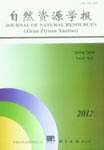GUAN Xing-liang, FANG Chuang-lin, ZHOU Min, WU Hong
As industrialization and urbanization accelerates, urban land expansions of many urban built-up areas in middle-western region are obvious. It is significant to obtain accurate information and analyze urban expansion process and its driving force. Based on Landsat TM, ETM+, MSS imagery data, this paper obtained the urban land use information of the three stages (1980-1990, 1990-2000 and 2000-2010) in Wuhan Urban Agglomeration with the application of remote sensing and GIS technology. Furthermore, the paper analyzed the temporal and spatial patterns of urban expansion, the expansion process and its driving force of Wuhan Urban Agglomeration using the urban expansion index and urban expansion model. The main conclusions are as follows: Firstly, the urban land of Wuhan Urban Agglomeration areas have experiencing a rapid expansion process; urban expansion intensity index in the mentioned three periods were 0.0732, 0.0289 and 0.0993 respectively, showing a significant fluctuation characteristics. Secondly, the spatial pattern of urban land use in Wuhan Urban Agglomeration was emerging conspicuous concentration during the study period; Wuhan was the center of the ring-layered expansion patterns. Moreover, the urban land-use expansion relatively centralized along the directions represented by the Third-Ring Road in Wuhan, Beijing-Guangzhou Railway and other transportation corridors. The urban expansion pattern was different in different stages. Thirdly, the expansion process of Wuhan Urban Agglomeration had formed one pole and four belts, one pole and one belt, three poles and six belts during 1980-1990, 1990-2000, 2000-2010 respectively. Fourthly, it was worth noting the fact that economic reform, national non-balanced development strategy, resource-saving and environment-friendly society building, and the Yangtze River, Beijing-Guangzhou Railway and other major transport arteries were the main driving factors for urban land use change. However, the dominant driving mechanism was different in different stages.
